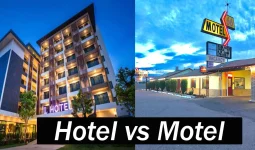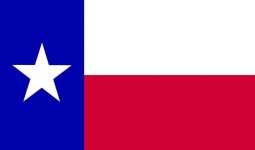The mortgage process can be confusing, but it doesn’t have to be. Your bank or lender will offer different home loans, each with advantages and disadvantages.
We’ll cover it here so you know what to expect if you apply for a home loan soon.
Here are the different types of home loans you should know about before getting started.
What Are Home Loans?
A home loan is a type of financing used to purchase a house. There are many different types of home loans, each with pros and cons.
Here are a few of the most common types of home loans;
Common Types of Home Loans
1. FHA Loans
An FHA loan is one of the types of home loans. It is a mortgage insured by the Federal Housing Administration (FHA).
Borrowers with FHA loans pay for mortgage insurance, which protects the lender against loss if the borrower defaults.
Because lenders are protected, they can afford to be more lenient when approving borrowers for an FHA loan.
For example, FHA allows down payments as low as 3.5% without a maximum debt-to-income ratio requirement. Plus, you don’t need to prove you have enough money for home repairs or renovations to qualify for an FHA loan!
Generally, the interest rates for an FHA loan are lower than other types of mortgages because the federal government backs these loans.
Interest rates also vary depending on your credit score and down payment amount. With an FHA loan, you’re not required to purchase private mortgage insurance (PMI) after making a 20% down payment.
However, if you put less than 20% down, PMI will be required until your equity reaches 20%. FHA requires PMI until the end of the first term of your original loan, which may last up to 30 years.
If you refinance your FHA loan before it expires, then PMI will no longer be required. If you decide to stop paying on your FHA loan and default, the federal government will cover up to $1 million of losses incurred by the lender, regardless of how much money is owed.
2. VA Loans
There are different types of home loans, and the VA is one of them. The VA doesn’t offer direct loans but seller concessions like closing cost assistance and grants towards a down payment.
A VA mortgage guarantees 100% financing for qualified veterans with little-to-no upfront cash outlay—that’s why it’s sometimes called zero down.
Veterans who qualify for this financing receive preferential treatment from lenders who want their business.
These benefits include minimal application requirements and many repayment plan options.
Unlike some other types of mortgages, a VA loan does not limit the amount you can borrow. However, there are limits on what property you can buy.
First-time buyers must buy only existing homes, while repeat buyers may purchase new construction or existing ones.
And unlike most types of home loans, VA mortgages are assumable, meaning the purchaser can transfer them to someone else without involving the lender.
The VA has several advantages over conventional loans, including no down payment or income restrictions. There is also a very long list of exceptions to any other Department of Veterans Affairs rule.
Buyers typically take advantage of this program if they have served in one of our military branches at any time during service.
While qualifying factors change based on military branch and time served, most anyone honorably discharged for reasons other than dishonorable will likely qualify for a VA loan.
This is possible if they have lived within specific state boundaries for at least one year before the application date.
3. USDA Loan
A USDA loan is a zero-down mortgage for eligible rural and suburban homebuyers. The United States Department of Agriculture issues USDA loans through the USDA loan program, also known as the USDA Rural Development Guaranteed Housing Loan Program. If you qualify, you can get a USDA loan with 100% financing.
This means you don’t need a down payment to buy a home. Your monthly payments on this type of loan will be lower than on a traditional mortgage.
The downside is that these loans usually have a term of 30 years, and interest rates are higher than conventional mortgages because they are considered riskier investments.
These home loans require applicants to live in their homes for at least five years before qualifying for refinancing or selling. The number of lenders offering them is shrinking.
4. Jumbo Mortgage
A jumbo mortgage is one type of home loan. This exceeds the conforming loan limit of the Federal Housing Finance Agency (FHFA). In most U.S. counties, the conforming loan limit is $484,350.
However, the limit is much higher in high-cost areas like San Francisco and New York City: $726,525. If you’re looking to buy a home in a high-cost area, you’ll need a jumbo mortgage.
5. An Adjustable-rate Mortgage
An adjustable-rate mortgage (ARM) is a home loan where the interest rate can change over time. ARMs are often offered at a fixed interest rate for an initial period, such as 5 or 7 years.
After this period ends, the interest rate will typically adjust annually based on changes in an index plus a margin set by the lender.
ARMs are more affordable than other types of mortgages because they offer lower initial rates. However, they do have some drawbacks—particularly if rates rise.
As we all know, types of home loans with variable interest rates are generally riskier than loans with fixed interest rates.
Continuation (four+ sentences): Another drawback of ARMs is that the upfront costs may be higher than with a traditional mortgage. For example, you may have to pay points – which represent 1% of your loan amount.
Continuation (six+ sentences): The upfront costs for an ARM can vary significantly depending on the interest rate after it adjusts and how long it takes for the teaser rate on your original ARM to expire.
Some lenders charge just one point up front, while others might charge two or three points.
6. Interest-only Mortgage
An interest-only mortgage is a loan in which you pay only the interest for a set period. This can be a good option if you expect your income to increase over time or plan to sell the property before the end of the interest-only period.
Just be sure to have a plan to pay off the total loan amount before the end of the term. Or, better yet, don’t take out an interest-only mortgage in the first place! That way, you won’t have to devise a plan for paying off the entire mortgage when it’s due.
One reason not to choose this type of home loan is that it’s expensive. Because you only pay back interest during those years with no principal payment, all the money goes toward your future debt.
Going towards debt instead of building equity and creating wealth, as would happen under other types of mortgages.
And because interest rates are so low right now, you might pay more in interest each month than you would for some different kinds of home loans.
So unless there’s a situation where an interest-only mortgage makes sense (like wanting to use cash from refinancing to invest), I’m recommending against them.
7. Fixed-rate
A fixed-rate mortgage is a loan with an interest rate that remains the same for the entire term.
Monthly payments. This type of loan is suitable for people on a budget who can afford the same monthly payment. There are two types of home loans related to a fixed rate, these are:
The 30-year Fixed-rate Mortgage
A 30-year fixed-rate mortgage is a home loan with a fixed interest rate for 30 years. You’ll have the same monthly payment for the life of the loan, making it easy to budget.
This type of mortgage is the most popular type of home loan, accounting for about 75% of all loans.
It’s also the simplest and cheapest option. But if you expect your financial situation to change in five or ten years, this might not be the best choice.
If you want a 30-year fixed-rate mortgage, consider locking in an interest rate before rates rise even higher. Interest rates are expected to increase in 2018, but only by a few percentage points.
The 15-year Fixed-rate Mortgage
Similar to the 30-year fixed-rate mortgage, but with a shorter term (15 years). Interest will accrue on the unpaid balance over time, so at the end of 15 years, you could owe more than double what you originally borrowed (plus any accrued interest).
Because you’re paying off the loan faster than with a 30-year term, your monthly payments will likely be lower than they would’ve been with a 30-year term. This means less money is spent on interest over time.
Plus, you’ll own your home and start building equity immediately. If you don’t plan on staying in your house long enough to recoup the closing costs (including legal fees), then a 15-year fixed-rate mortgage isn’t worth it. This is because of the rapid amortization and additional interest expense that occurs.
One way to lower your monthly payment on all types of home loans is to put down a larger down payment when buying your house. This may mean having less available cash, but it can save you from costly future mortgage increases.
Other Mortgage Terms
- Government-backed mortgages: FHA, VA, and USDA loans are all government-backed mortgages in the list of types of home loans. Each has benefits and drawbacks, so choosing the right one for your needs is essential. FHA loans are the most common type of government-backed mortgage, and they’re available to people with all credit scores. VA loans are only available to veterans and their spouses, but they offer 100% financing and no monthly mortgage insurance premiums. USDA loans are only available in rural areas but offer 100% financing and low monthly mortgage insurance premiums.
- Mortgages not backed by the government are considered conventional mortgages by lenders.
- Mortgages that adhere to local lending limitations established by the government are called conforming mortgages, a phrase used in the business.
- Reverse Mortgages: A reverse mortgage is a home loan that allows homeowners 62 years or older to convert a portion of their home equity into cash. The amount you can borrow is based on your age, the value of your home, and the interest rate. No monthly payments are required, but the loan, interest, and fees must be repaid when you sell your home or die. Interest rates depend on your credit score, so checking with lenders before applying for a reverse mortgage is essential.
Conclusion
Understanding the different types of home loans available is essential to getting the best loan for your needs.
This guide should have given you a good idea of the most common types of home loans and their pros and cons.
Talk to a loan officer at your bank to learn which type of loan would be best for you.
And remember, no matter what kind of loan you choose, be sure to shop around for the best interest rates!








